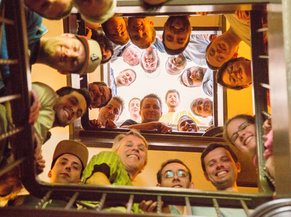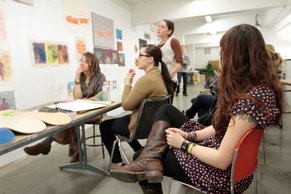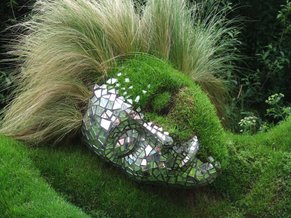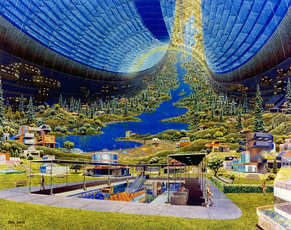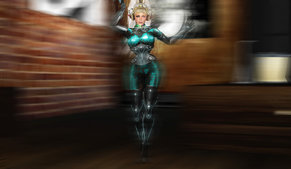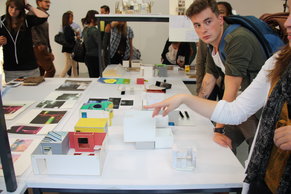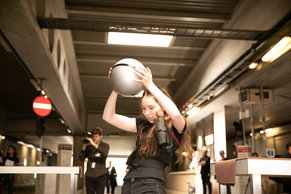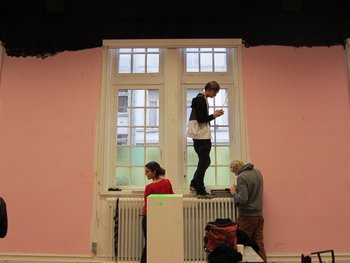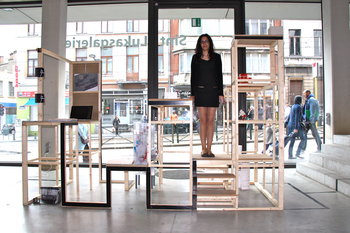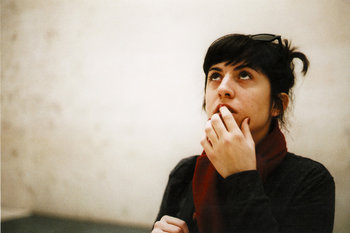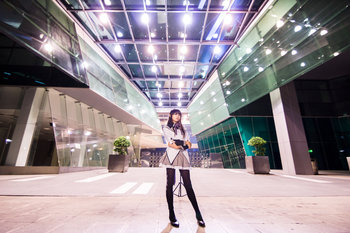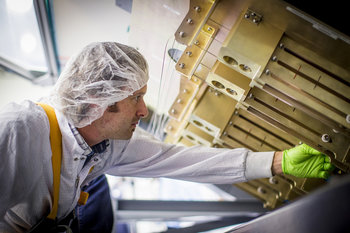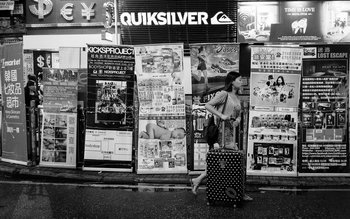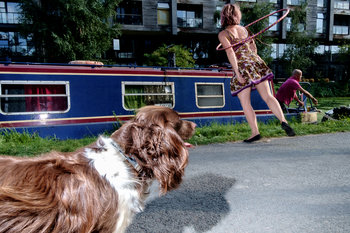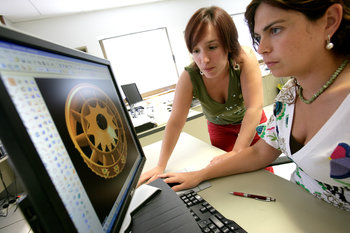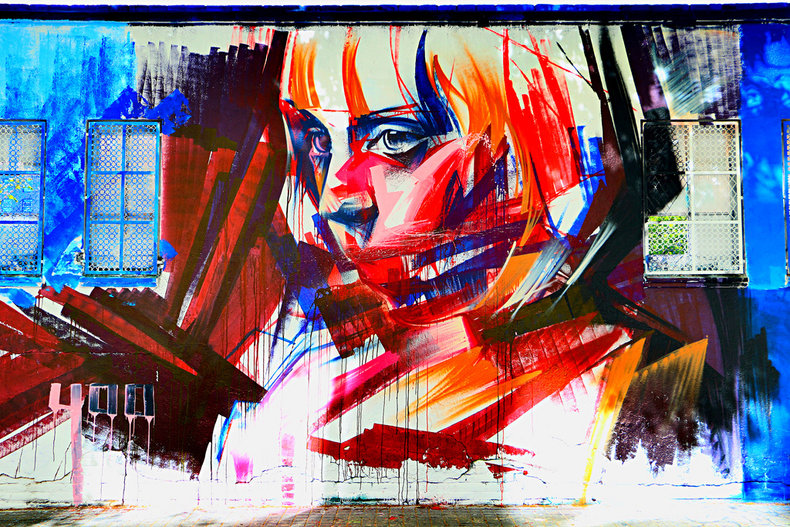
Environment Design
Designing physical and virtual environments to achieve some objective.A teacher finds that rearranging where students sit changes class behavior. For example, a student who is often disruptive who is less disruptive sitting at the front middle seat in the class.
A manager removes all the chairs from a meeting room to speed up meetings.
An employee with tennis elbow finds that the chairs at work are making it worse due to elbow contact with armrests. They find a chair in the employee lounge with no arms and start using that.
Process Design
Designing repeated process including business processes and everyday tasks.A person finds the perfect white v-neck undershirt and purchases 45 of them. This scale reduces overhead related to shopping and daily selection of an undershirt.
A manager finds that a talented worker often pushes back strongly on work assignments if they are due within the next week but the individual will easily accept work if it isn't due anytime soon. The manager begins planning the individual's work far in advance so that they can assign them work at least a month in advance of its deadline.
A construction laborer who is often asked to deconstruct walls finds that carefully removing screws from drywall allows it to be removed in large sections. This dramatically reduces dust and clean up work.
A student designs a process for achieving high grades whereby they read course materials ahead of time, work on assignments until they reach a high level of quality and stop to take the time to learn any concepts that they initally find difficult.
A small business person who often has to make difficult decisions in an environment of competition, constraints and ambiguity develops a process for decision making whereby they carefully frame the problem, brainstorm options, validation options, list pros and cons, make a timely decision and then perform a final sanity check.
Complexity Hiding
Creating things that hide complexity. A basic software design technique that can be applied to any problem.A restaurant having trouble keeping up with volumes redesigns its menu to be based on items that can be produced in an assembly line fashion. Staff only have to complete a few simple tasks for each menu item and the rest of the complexity of the restaurant is hidden from them. This allows for high throughput.
A small business owner struggling with their bookkeeping, tax planning and tax filing hires a small accounting firm to take care of it. This hides the complexity of accounting from the owner.
A construction manager at a building site works from a set of plans and tells various tradespeople and contractors what needs to be done. This hides the complexity of the overall plan from most of the workers on the project.
Choice Architecture
Designing a set of choices in order to optimize for a goal.A car manufacturer always starts the online sales process by asking customers to choose a color. This is a fun thing to do and most customers will comply. By selecting a color customers begin to feel that they are ordering and become more engaged.
Iterative Design
Iterative design is the process of designing, testing and then improving the design in quick cycles.A restaurant always offers a unique daily menu item. They track which items do well and test these further by temporarily putting them into the regular menu. If the menu items continue to outperform they may remain as permanent menu items.
An IT manager experiments with different team structures for sprints and measures which structures appear to yield the highest performance. They find that teams of 3 developers and 1 team lead appear to outperform but they continue to test this configuration against other ideas.
A marketing team try dozens of ads and landing pages each week to develop data around what works. They are able to improve conversion rates quarter over quarter for several years in a row until consumer behavior appears to change and new experiments are required.
Backward Invention
Backward invention is the process of making a simpler version of an advanced design. This is often done to reduce cost for introduction to a new market where prices must be lower.A musician develops a recording studio in their home that is based on the principles of a professional studio but with severe cost cuts. For example, they use thick layers of moving blankets obtained at a flea market for sound deadening.
Passive Design
Passive design is a design that requires no energy that competes with designs that do require energy.An apartment dweller who hopes to reduce their heating bills opens their curtains when it is sunny and closes them when it is not. The apartment gets a great deal of light during the day and this has some effect on their electric bills.
A homeowner puts rocks that make a loud crunchy sound when you walk on them at the back of their house as a security measure whereby it is impossible to walk behind the house without making a great deal of noise.
User Experience Design
User experience design is the process of designing environments and tools that people interact with.A cafe owner runs a small retro cafe with original 1972 interiors. Unfortunately, each table is quite small. The owner carefully selects all the table settings to be a pleasing size while not being so large as to create a cluttered feeling on the small tables.
Visual Design
Visual design is the broad practice of designing visual things such as graphics.A homeowner who often bumps their head on a low point in a ceiling in their storage room paints the low point a bright color that contrasts with the rest of the room. This helps them to remember not to bump their head.
A musician who maintains a journal of song ideas has a color coding system for highlighting different types of ideas to make them easier to find in the hundreds of pages they produce each month.
A preschool teacher draws unique little pictures on the workbooks of each student. For example, a student who likes turtles gets a little cartoon turtle on their workbook. This helps the students to find their workbooks and not to take the wrong workbook home.
Design to the Edges
Design to the edges is the practice of making a design as useful as possible for as many people as possible. This can be contrasted with the poor practice of designing things for the "average person."A manager of a small health food store adopts a policy of staff never leaving unattended boxes or stock in the aisles where they may obstruct people with disabilities and others such as parents with strollers.
Transition Design
Transition design is the process of moving towards a future state that may take many steps to achieve.The owner of a small resort would like to host weddings and events in future. They begin constructing larger buildings that can be partitioned into small rental units. In the future, these structures will be repurposed to be event spaces.
An IT manager supporting a legacy application realizes that this work will one day disappear. They begin volunteering the team for more strategic work in hopes of redesigning the services of the team towards more modern platforms.


